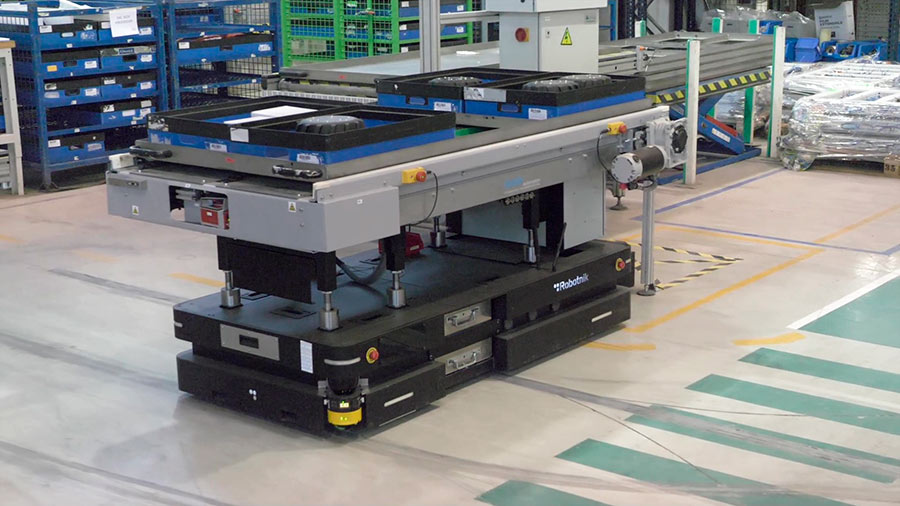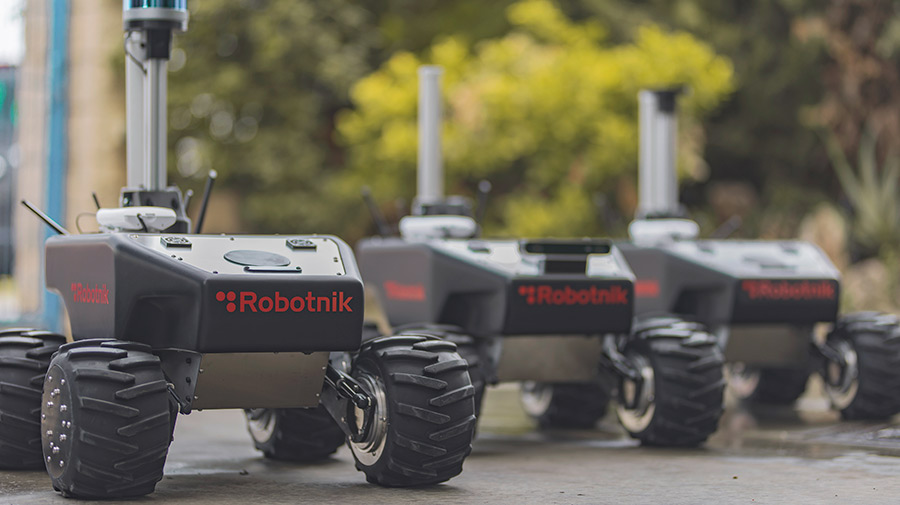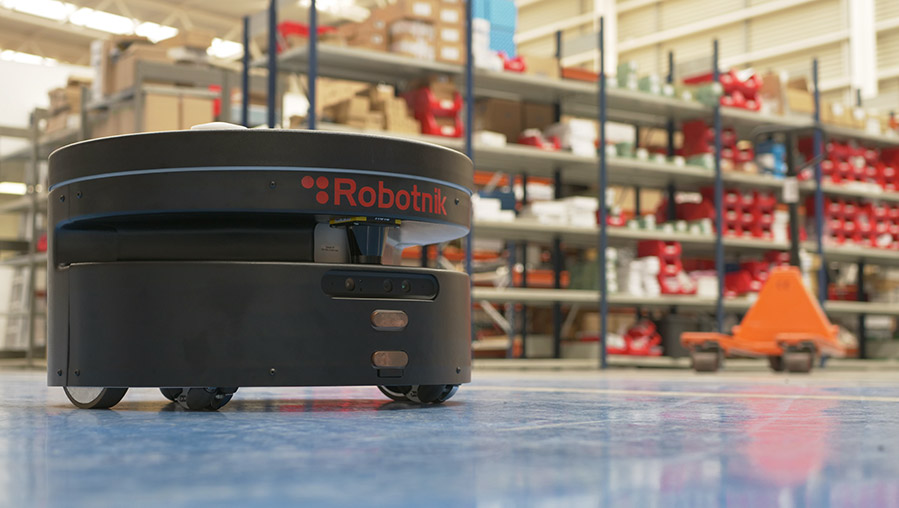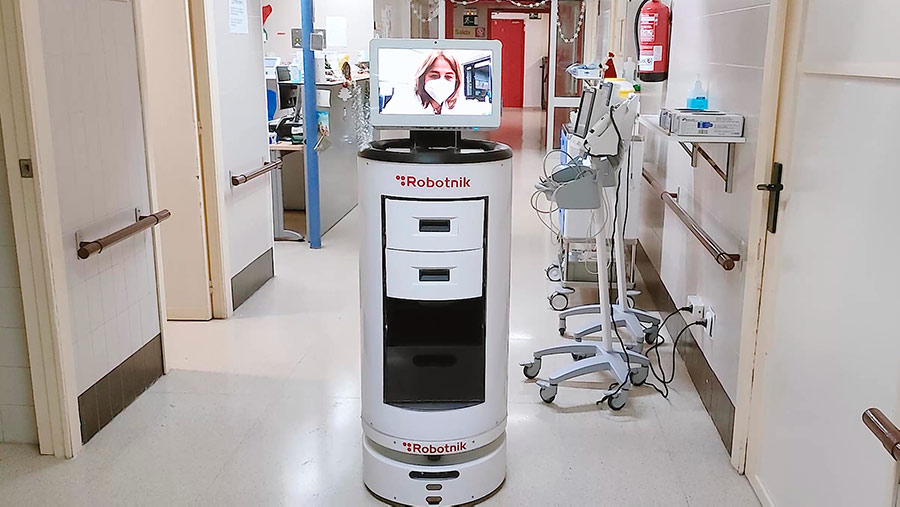Within the Industry 4.0 context, it’s common to see a factory with more than one autonomous mobile robot (AMR) performing different tasks in the production process.
When multiple AMRs are deployed, it requires a tool capable of managing the fleet of robots and optimizing their performance. This resource is the system that coordinates all the robots for the correct functioning of the fleet and the overall profitability of the operations they execute.
How to optimise the work of several mobile robots working together? or how to avoid downtime or production stoppages? and how to avoid interlocks between them?
The answer is a Fleet Management System (hereafter FMS). This article shows examples of the use of these systems in autonomous transport applications in logistics and intralogistics, where their use is currently most widespread, but also in other sectors.
Robotics Fleet Management
A Fleet Management System applied to vehicles is not the same as a FMS applied to automated robotics.
Many of those that are being sold commercially as FMS are really Fleet Monitor Systems because they are focused on fleets of vehicles that have a human driver, i.e. for fleets of non-autonomous or teleoperated vehicles.
With these monitoring systems you can know where the vehicle is at any given moment, receive certain status information (location, how much fuel is left, speed…) and return the order that the driver will execute.
Knowing where the autonomous robot is and what it is doing, but not being able to send or modify an order, means that the vehicle cannot be acted upon. Therefore, this is only for monitoring, not for management. For autonomous robotics, a further step is needed: robotic fleet management software.
Collecting relevant metrics or data and displaying them on a dashboard is only part of what the FMS offers as applied to the robotics sector, but it is not enough to be considered a robot fleet management.
What is robot fleet management system for?
The Fleet Management System is responsible for centralising the management of the robot fleet, allowing operators to act from several standard communication devices. In this way, the robots can be accessed from any location (office, warehouse, home…) and by any device (PDA, mobile phone, tablet, computer, …).
FMS offers a higher layer of abstraction that allows interacting with the entire fleet of robots as if it were a single system. Different access levels can be defined so that it is possible to specify typologies of users, each of which will have certain privileges to interact with the system.
In addition, a user can define missions with different levels of detail. It is possible to assign a robot to a specific mission or let the intelligent system decide which robot in the fleet will be given the mission.
- Capable of coordinating fleets of robots.
- Can be deployed locally / in the cloud.
- Graph based orchestration .
- Monitors fleet status.
- Customizable.
The Fleet Management System includes a graphical user interface that allows:
- Plan missions
- Assign tasks
- Route planning
- Monitor the robot fleet.
- Location of each robot, robot status, battery level, mission status, etc.
- Monitor events and alarms of the robots and the controllers that manage communication with lifts, doors and loading/unloading docks.
Robotic fleet management in logistics
The standard operation of a fleet of robots in logistics environments requires the periodic execution of transport operations. These are defined within the FMS as missions and are managed within a dynamic remote access database.

In addition to minimising transport times, there are other advantages offered by robot fleet management. For example, maximising autonomy times, priority management, quality control if it is a mobile manipulator, etc.
How does robotic fleet management help with priority management?
A situation that can be recurrent in a warehouse is the following: an RB-1 BASE is executing a low-priority task and crosses paths with an RB-THERON that is going to execute a high-priority task. They converge at the same point in the warehouse through an aisle area where they cannot both pass at the same time and, therefore, they block and stop for safety. At this point, what is the optimal mission and how do the robots decide which one has to pass first?
In a work floor there are many such situations and solving them in one way or another means capital gain or loss.
Robotic fleet management in other sectors
Although the most widespread use of robot fleet management is in logistics tasks, it also has applications in other areas, for example in the security and rescue sector. Imagine mapping an unknown area. If it is a disaster area, one robot is mapping – the point is to minimise mapping time – another is detecting survivors and another is removing debris. Coordination is essential here.
Another example, in a hospital. Perhaps in a hospital environment the goal is for autonomous robots to perform their tasks when there are fewer people. In such a case, the robot fleet management system will optimise when is the best time for each robot to work and in which areas.
In conclusion
A system that coordinates, manages and optimises each of the robots individually and in relation to each other is essential, and that is what the robot fleet management system does.




